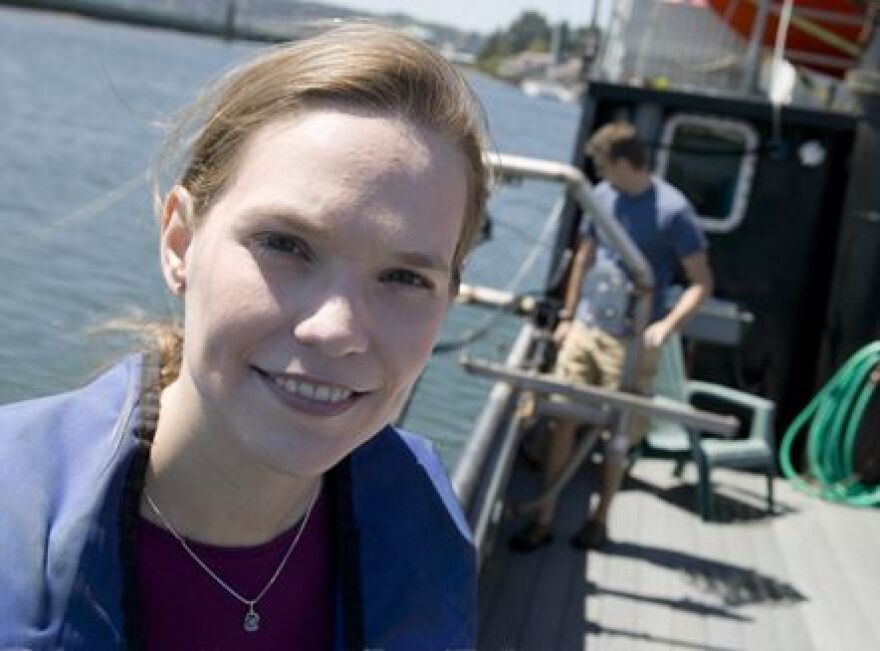In today’s Academic Minute, Dr. Kelly Benoit-Bird of Oregon State University explains why marine prey species do not always find safety in numbers.
Kelly Benoit-Bird is an associate professor of ocean ecology and biochemistry at Oregon State University where she leads the Pelagic Ecology Lab. Her research seeks to understand the role of spatial and temporal patterns in ecological processes. Her current research project is examining the role of prey distribution in determining the behavior and population dynamics of fur seals and marine birds in the Bering Sea. She holds a Ph.D. from the University of Hawaii.
Dr. Kelly Benoit-Bird – Marine Predators and Prey Density
I am part of a large team of scientists that has spent the last 5 years trying to understand how animals respond to the rapid changes occurring in the Bering Sea. My collaborator, Scott Heppell, and I spent months on a fishing boat, measuring the food available for kittiwakes, murres, and fur seals while other members of the team tracked the movements and population dynamics of these predators and their new offspring. Together, we wanted to figure out how these animals were making a living and supporting their families.
We started by making maps of prey the way it has always been done, in this area and many others– by looking at the total abundance of each prey species. But, when we did that, we didn’t see much overlap between the high prey areas and the areas being used by the predators. Even more concerning, the areas that looked to us like the best places to eat were areas where predator populations were declining despite long-term protection. So, we rethought our approach and let the behavior of each predator identify what features of prey were important for their success.
Kittiwakes, murres, and fur seals all told us the same story: they care more about food being densely packed than they do about the total number of prey or even its calorie count. Predators in the Bering Sea were effectively finding areas of densely packed pollock and krill, their key prey – even when those prey were found in incredibly small aggregations. We don’t yet understand how they manage to find these small patches of food at great depths, in the dark, in a large, stormy sea, but, these data have revealed that small-scale prey patches are critical for predators to successfully make a living, changing how we see their ocean world.
Production support for the Academic Minute comes from Newman’s Own, giving all profits to charity and pursuing the common good for over 30 years, and from Mount Holyoke College.



